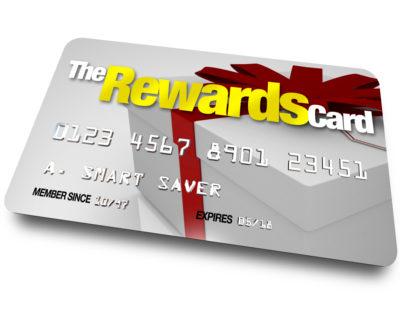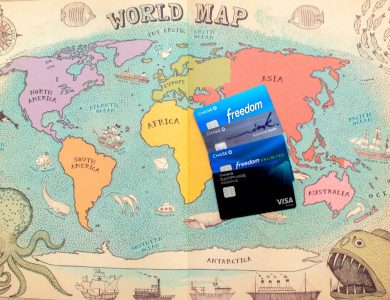
In the bustling marketplace of modern consumerism, rewards cards gleam like golden tickets promising exclusive benefits, enticing discounts, and the allure of free perks. They nestle comfortably in wallets, quietly beckoning their holders to swipe with the promise of future gains. Yet, beneath this glittering facade lies a subtle question that lingers in the minds of both savvy spenders and cautious consumers alike: Do these enticing pieces of plastic drive us to spend beyond our means? As we delve into the world of rewards cards, we unravel the complex relationship between incentive and expenditure, exploring whether these loyalty programs truly offer value or simply encourage a cycle of unnecessary spending. Join us on this journey as we weigh the benefits against the potential pitfalls, examining the true cost of chasing rewards in an age of instant gratification.
Understanding the Psychology Behind Rewards Cards
At the heart of rewards cards lies a psychological principle that taps into our innate desire for gratification. When consumers swipe their cards, they’re not just making a purchase; they’re also chasing the dopamine rush that comes from earning points, miles, or cash back. This sense of achievement can lead to a cycle of spending more than necessary, as the promise of future rewards subtly nudges them towards making additional purchases. This behavior is compounded by the allure of exclusive offers and bonus points, which can make even the most frugal shopper feel justified in spending more than they initially intended.
- Instant Gratification: The immediate sense of reward can overshadow the long-term financial implications.
- Perceived Value: Consumers often overestimate the benefits of rewards, leading to overspending.
- Social Influence: Seeing peers benefit from rewards can increase the pressure to spend more to ‘keep up’.
Moreover, the strategic use of points expiration dates and tiered reward levels creates a sense of urgency, encouraging users to spend more to avoid losing out on benefits. The psychological interplay of these factors can often result in spending patterns that prioritize short-term rewards over long-term financial health, making it crucial for consumers to remain aware of the underlying motivations driving their spending habits.

Analyzing Spending Patterns Linked to Incentive Programs
Rewards cards, often touted for their benefits like cash back, points, or travel miles, present an interesting dynamic in consumer spending habits. While these incentives can offer tangible benefits, they may also subtly influence spending behavior. Consumers often find themselves swiping their cards more frequently to hit bonus thresholds or accumulate points, sometimes on purchases they might otherwise avoid. The allure of redeeming these rewards can lead to increased transactions, blurring the line between necessary and discretionary spending.
Some common spending patterns observed with incentive programs include:
- Increased Frequency of Purchases: Users might purchase more often to earn rewards quicker.
- Higher Spending Amounts: To meet minimum spending requirements, consumers may spend more than planned.
- Impulse Buying: The excitement of earning rewards can lead to spontaneous purchases.
- Overlooking Better Deals: In pursuit of rewards, consumers might ignore cost-effective alternatives.
Understanding these patterns is crucial for consumers aiming to maximize benefits without falling into the trap of unnecessary expenditure. Balancing the allure of rewards with mindful spending can help in leveraging the full potential of rewards cards without compromising financial health.

Evaluating the Real Benefits Versus Hidden Costs
When considering the allure of rewards cards, it’s essential to weigh the tangible perks against the subtle, often overlooked expenses they may incur. Rewards cards offer a plethora of benefits, from cashback and travel points to exclusive discounts and privileges. These advantages can indeed enhance your financial landscape if used judiciously. However, the hidden costs associated with these cards can sometimes overshadow the perceived gains. For instance, higher interest rates, annual fees, and potential for overspending due to the temptation of rewards can erode any potential savings.
- Interest Rates: Many rewards cards carry higher interest rates, which can quickly outweigh the value of the rewards if balances are not paid in full.
- Annual Fees: Some cards charge hefty annual fees that may not justify the rewards earned unless spending is substantial.
- Overspending Temptation: The allure of earning more points can lead to unnecessary purchases, resulting in higher expenses.
In essence, while the allure of rewards is strong, consumers must remain vigilant and conduct a thorough cost-benefit analysis. Only then can one truly understand whether the rewards card is a beneficial tool or a financial pitfall.

Practical Tips for Using Rewards Cards Wisely
- Understand Your Spending Habits: Before swiping your rewards card, take a close look at your monthly expenses. Determine where you spend the most and choose a card that offers maximum rewards in those categories. This will ensure that your rewards are working in your favor rather than encouraging purchases you wouldn’t typically make.
- Set a Budget: Establish a monthly budget for your rewards card usage to avoid the trap of overspending. It’s easy to get caught up in earning points or cashback, but staying within your financial limits ensures that you reap the benefits without accruing debt.
- Pay Your Balance in Full: To truly benefit from a rewards card, pay off your balance in full each month. This not only helps you avoid interest charges that can negate your rewards but also encourages disciplined spending.
- Leverage Sign-Up Bonuses Wisely: Many rewards cards offer attractive sign-up bonuses. While these can be tempting, make sure the spending requirements align with your usual spending patterns. Don’t be swayed by a one-time offer that leads to unnecessary purchases.
- Monitor Your Rewards: Regularly check your rewards balance and expiration dates. Some programs have limits on how long you can hold onto your points or cashback, so make sure to use them strategically before they expire.



